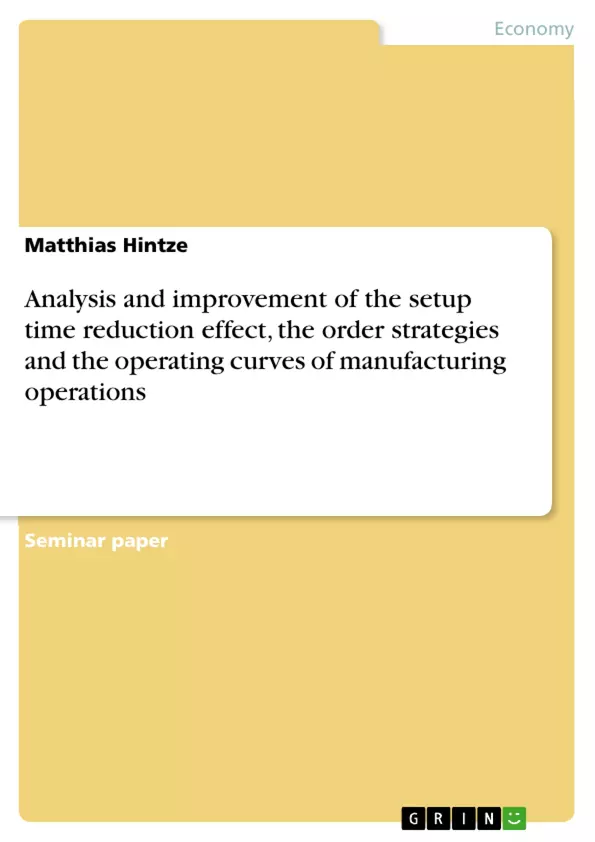The following report is intended to give you a good overview how our project group worked on the tasks of the Picsim-Simulation Project. We start with explaining our point of departure for the tasks in phase two. Moreover, this paper describes the results of the tasks no. 1, 3 and 4. Firstly, which values are those of our starting point for phase two? We used the results from our run no. 10 from the first phase of the experiments. This case is the base case for all following results we got. How did we reach these results of run no. 10? First, we worked with try and error. That means that in the beginning we just chose some values by chance and looked which results we got. After that we started using the method of Cycle Planning (CP). After using CP and improving our results we reached the results of run no. 10 which you can find in the appendix.
To be able to explain our results better and more detailed we decided to explain all the figures from the SIPOC chart. What means SIPOC and what contains this figure? SIPOC is a term used in the Six-Sigma methodology. Its name results from the parts of the Top-Level-Process Design: Suppliers (S), Inputs (I), Process (P), Outputs (O), and Customers (C). SIPOC is a tool used by a team to identify all relevant elements of a process improvement. Moreover, it makes sure that all members of a team have the same understanding of the process which is to improve. The results from the SIPOC analysis are made visible in a very clear form by the use of a SIPOC diagram. In our case it contains the Flow time efficiency and the Added value time ratio.
Now we have to make sure what is meant by Flow time efficiency and Added value time ratio. Firstly, the answer to Flow time efficiency. Flow time efficiency is an indication we get by comparing the average flow time with the theoretical value, it is the ratio between those two factors. The relationship between them is as follows: Secondly, the Added value time ratio is the coefficient which you get if you correlate the Added value time and the Non-added value time. The formula to this relationship is: The Added value time ratio contains the percentage of workers or machine utilization because this coefficient gives you the percentage of effective work. Non-added value time contains waiting time, setup time and transportation. [...]
Table of Contents
- Outline
- Introduction
- Task 1 Setup time reduction
- Task 3 Order stategies
- Description of the order strategies
- Batch size calculation
- Comparison of the order quantities
- Impacts on given production system
- Task 4 Operation curves
- Conclusions and guidelines
Objectives and Key Themes
This report examines the process of analyzing and improving manufacturing operations using a simulation project. It focuses on the results of tasks 1, 3, and 4, highlighting the impact of setup time reduction, order strategies, and operating curves on overall efficiency and performance. The report utilizes the Six-Sigma methodology and its SIPOC analysis to understand process improvement elements.
- Analyzing and improving manufacturing operations through simulation
- Setup time reduction and its impact on efficiency
- Order strategies and their influence on production systems
- Operating curves and their role in optimizing production
- Application of Six-Sigma methodology and SIPOC analysis for process improvement
Chapter Summaries
- Introduction: This chapter sets the stage for the project by describing the starting point for the analysis, the base case used for subsequent results, and the importance of the SIPOC chart in understanding process improvement. The chapter introduces the key metrics: Flow Time Efficiency and Added Value Time Ratio.
- Task 1 Setup Time Reduction: This chapter focuses on the reduction of setup time as a means to improve efficiency and reduce costs. It presents methods used for setup time reduction and their effects on the overall process.
- Task 3 Order Strategies: This chapter analyzes the different order strategies used in the project, including their description, batch size calculation, comparison of order quantities, and their impacts on the production system.
Keywords
The key words of this project include: manufacturing operations, simulation project, setup time reduction, order strategies, operating curves, Six-Sigma methodology, SIPOC analysis, Flow Time Efficiency, Added Value Time Ratio, process improvement, optimization, production systems, service level, total costs, Project Performance Indicator (PPI).
- Arbeit zitieren
- Matthias Hintze (Autor:in), 2005, Analysis and improvement of the setup time reduction effect, the order strategies and the operating curves of manufacturing operations, München, GRIN Verlag, https://www.hausarbeiten.de/document/44611


